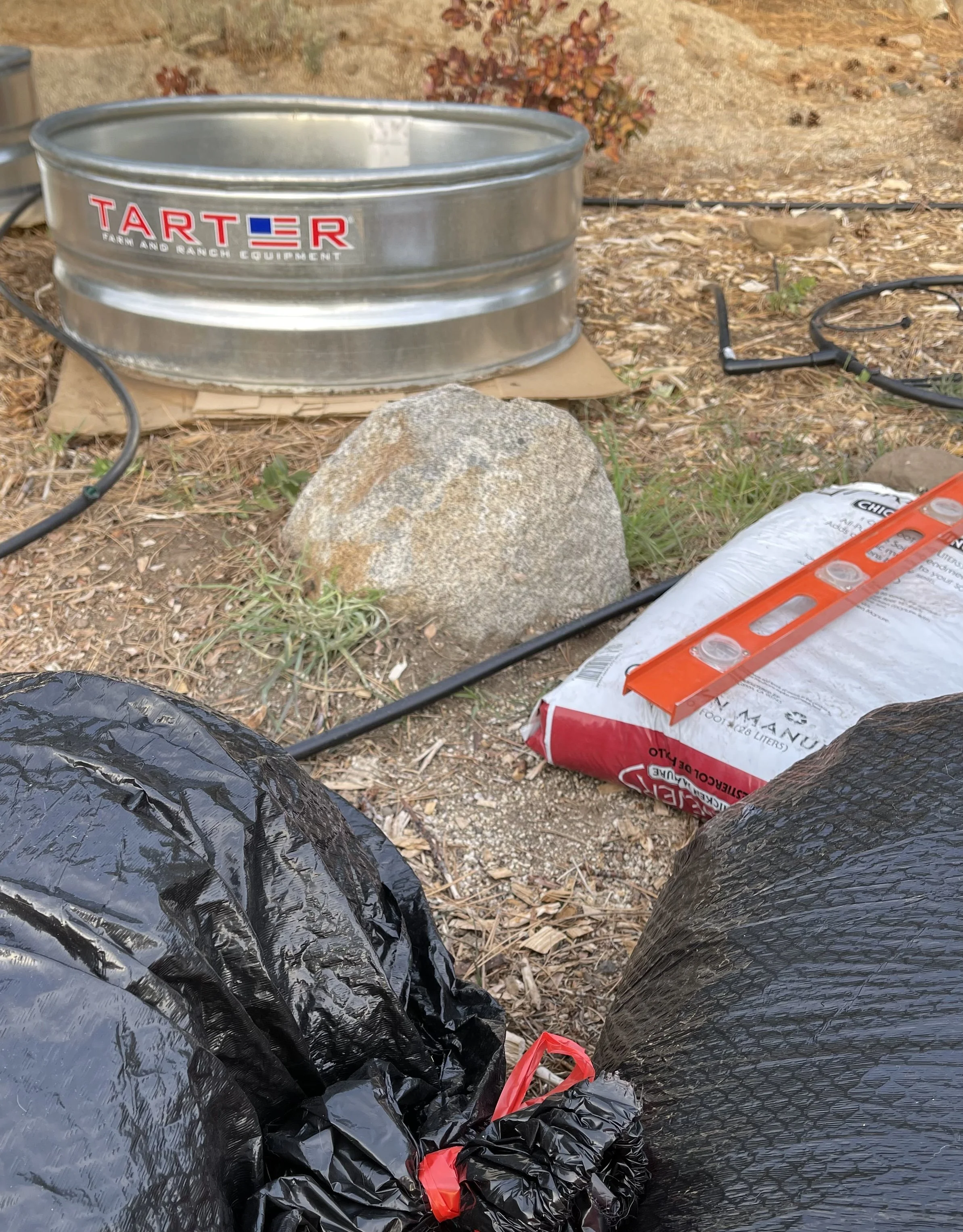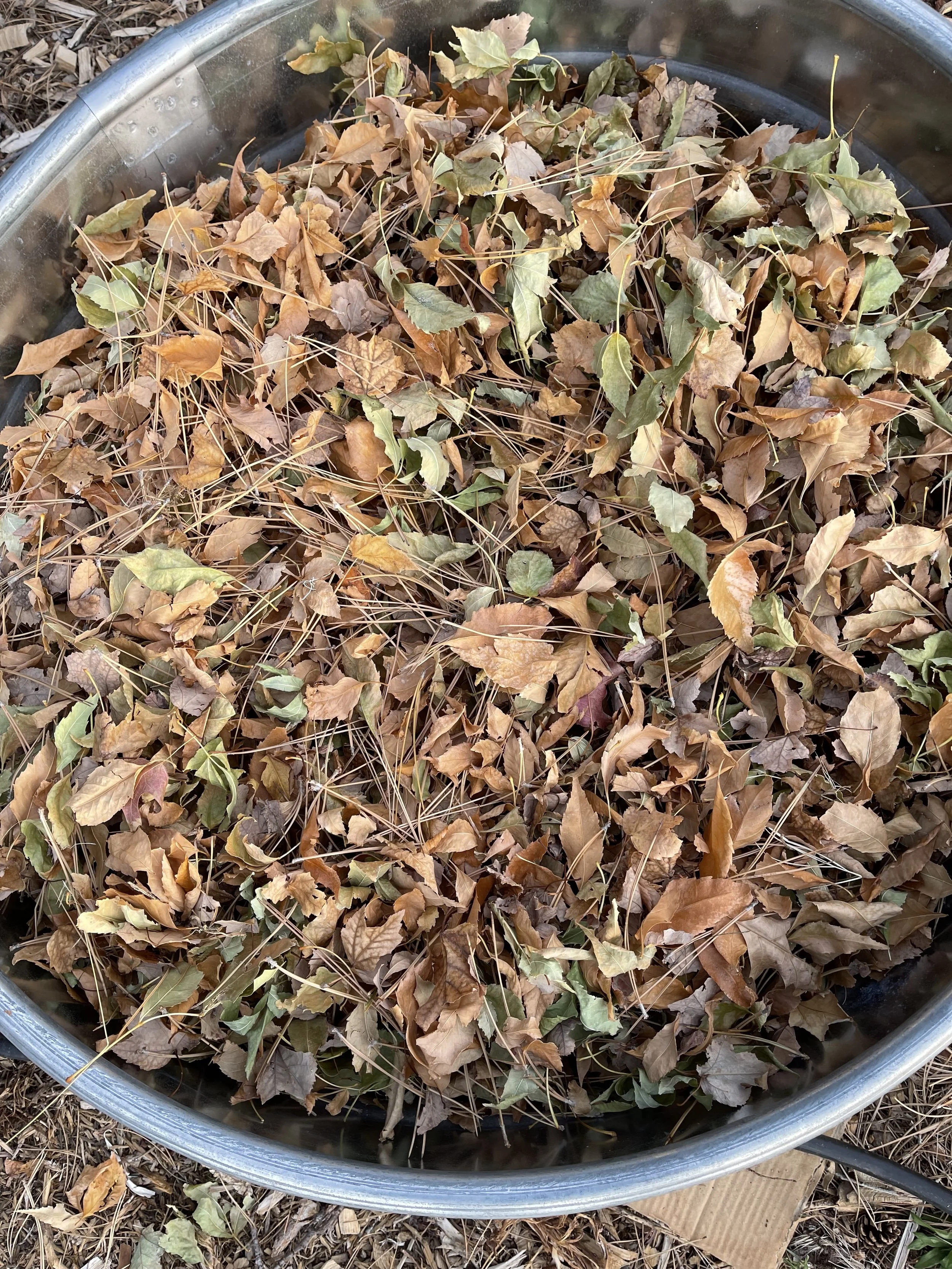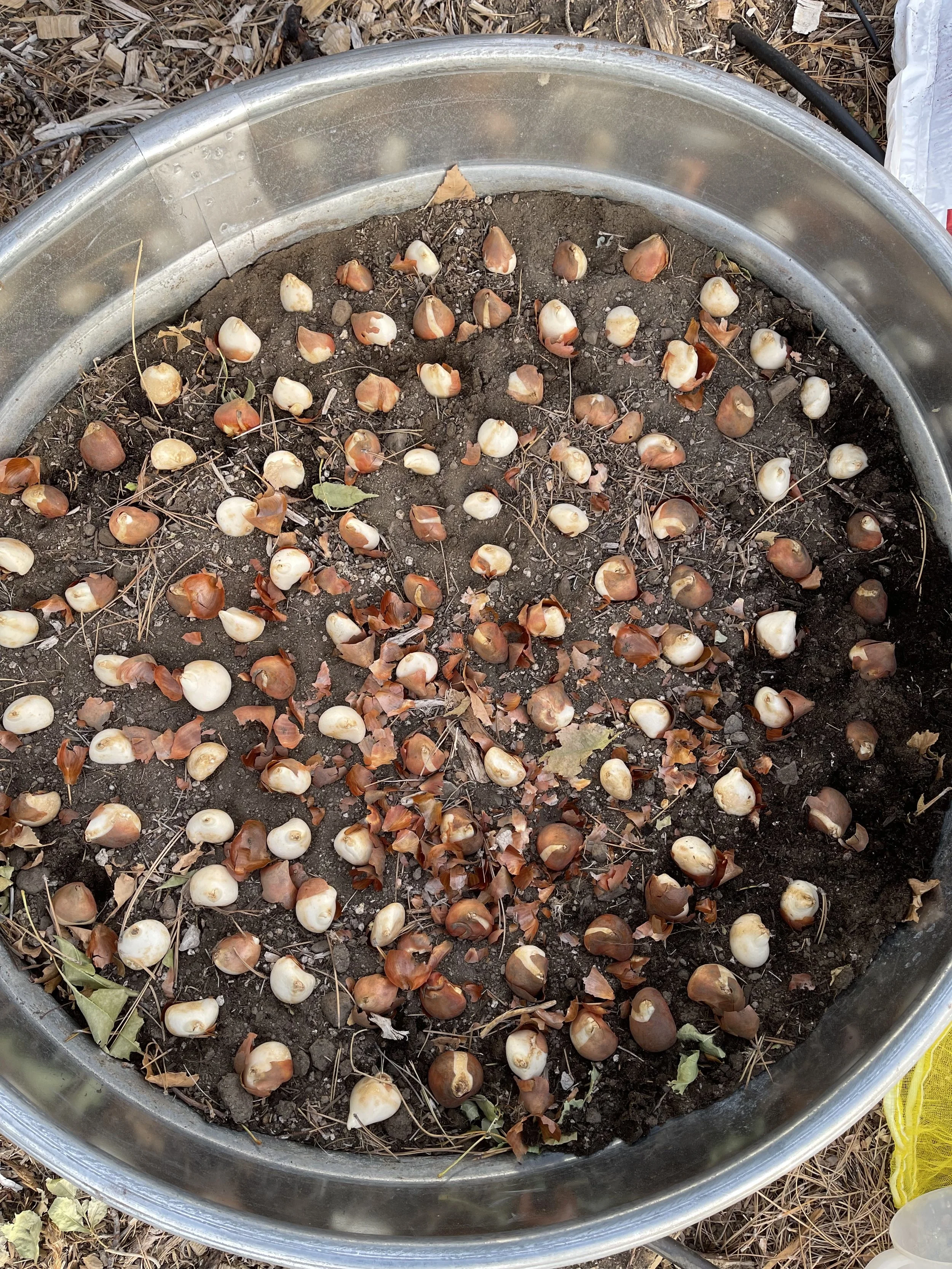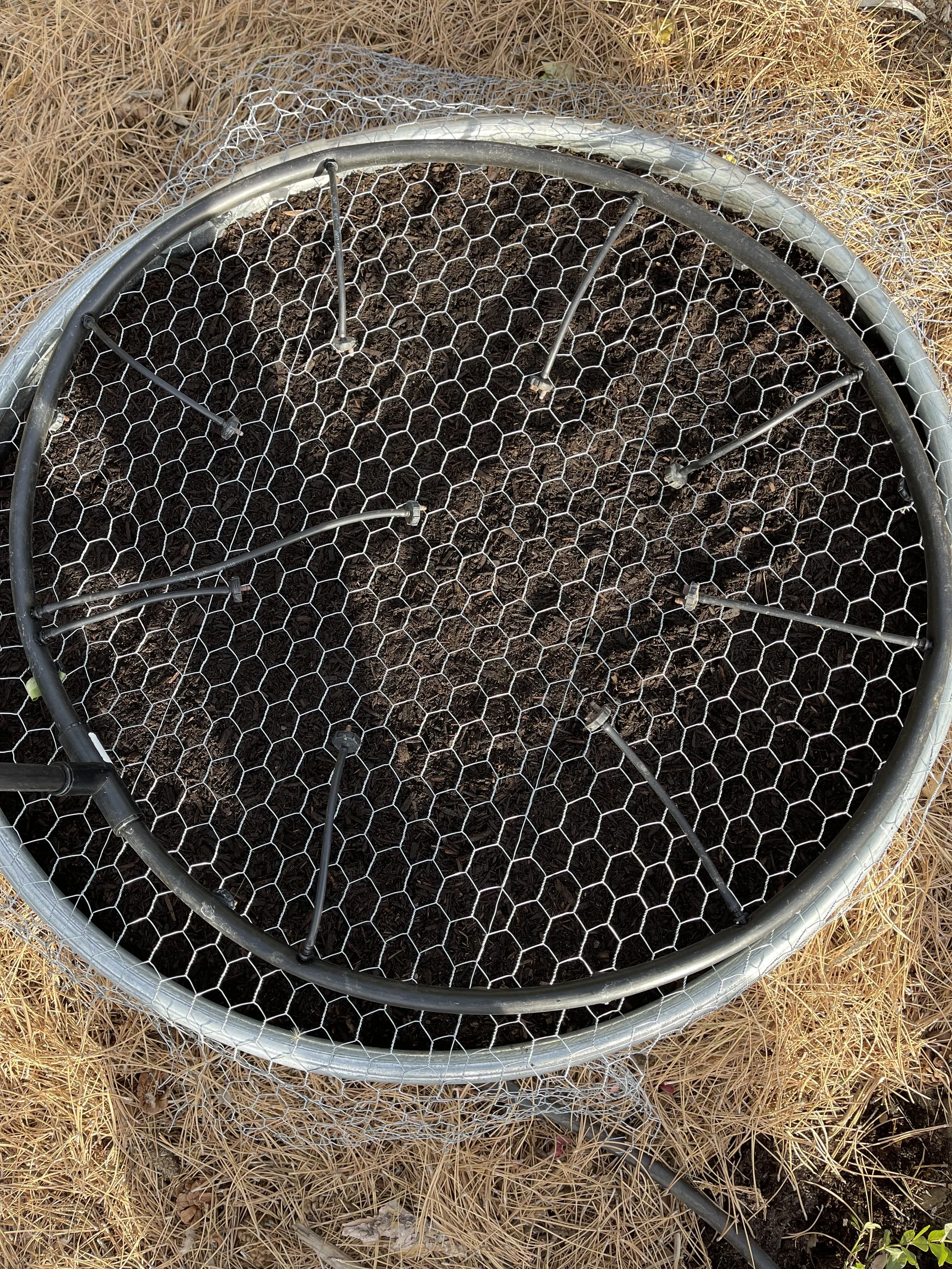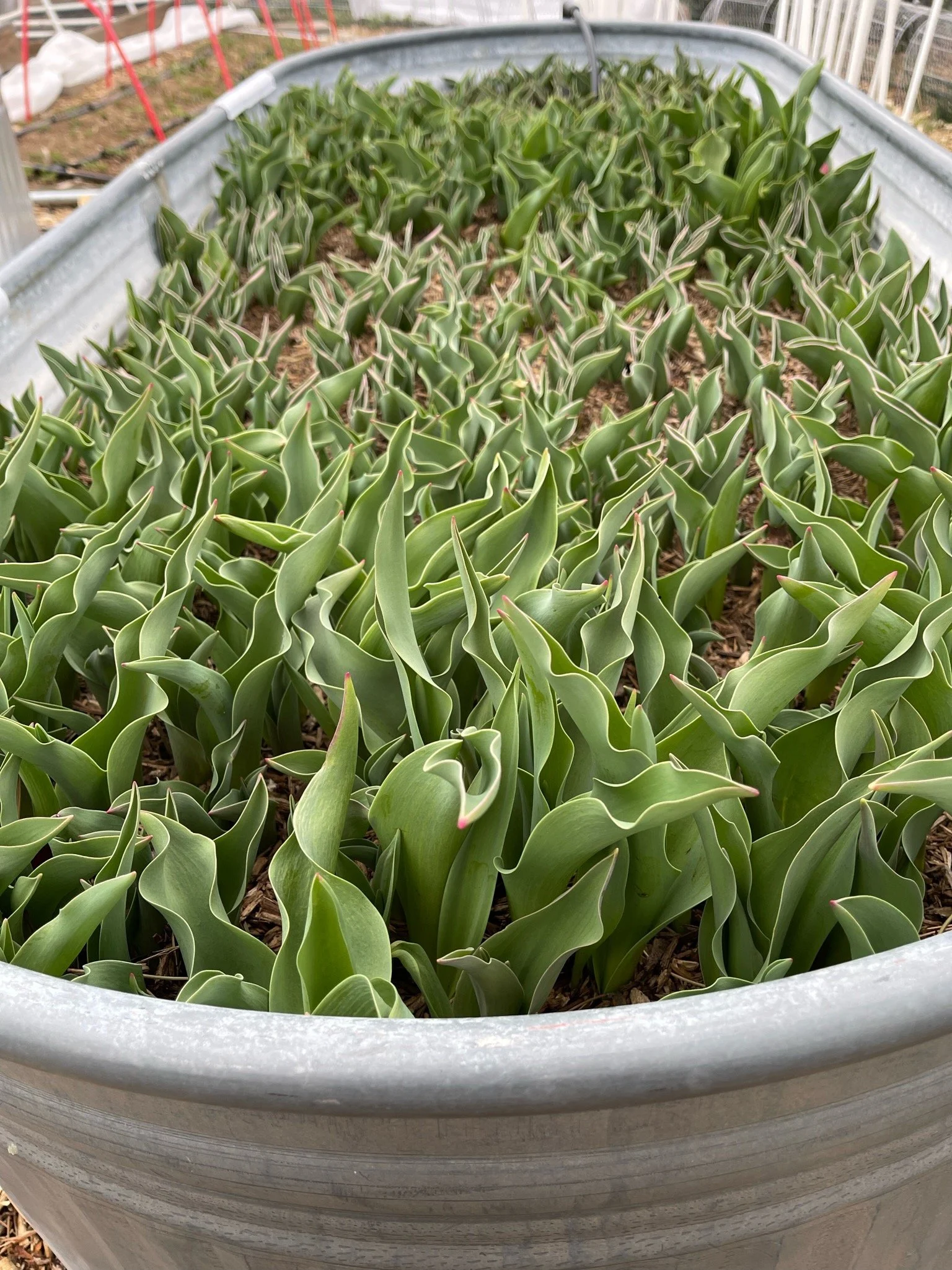Tanks for the Tulips
With just a few easy steps, you can have a tank full of tulips in spring even if you have bad soil. It’s easier than piling up layers in a pan of lasagna.
IN LATE FALL:
Place a 3 ft. Fire Ring/Round Raised Bed Planter on a bigger piece of cardboard.
Fill with fluffy leaves.
Toss in a cubic foot bag of chicken manure like it’s a salad.
Place an inch of native soil on top as the next lasagna layer.
Nestle about 100 tulip bulbs with points up into the soil.
Cover with two 2-cubic-foot bags of compost, which should bring your layers to within an inch of the top on the tank.
If Squirrels are a problem, finish with a chicken wire “lid.”
Add irrigation because tulips need moisture about once a month in winter and twice a week in late April and May.
I mulch outside the ring with pine needles to keep weeds at bay.
Your lasagna layers will break down and meld over winter to make nice soil.
IN SPRING
Remove the chicken wire when new leaves start to emerge . When tulips shoot up and show color, pull every other tulip with its bulb attached as an ongoing food source if you want to store in the fridge for Mother’s Day bouquets. They will keep about 3 weeks. They pull easily through compost.
As the remaining tulips bloom, you can enjoy them or cut them, leaving two leaves, so they can rebuild for next year.
Meet Parrot King, which will be my go-to for Mother’s Day bouquets. The parrots on the top photo are called Flame Parrot.
ADDING MORE PLANTS
In the gaps left where you pulled bulb and all, you can insert a plug for lettuce or kale. Gradually the tulip leaves will die back leaving additional mulch for the spring transplants.
After you harvest your greens in June, you can replace with warm season transplants like beans, squash, peppers, zinnias, etc. For spacing, refer to the cubic foot gardening guidelines. Be gentle as you wedge in your transplants so you don’t stab any bulbs.
ADDING FERTILITY
Foliar fertilizer on all new shoots helps when growing in a lasagna bed, because your soil layers are breaking down gradually. Some nutrients will be available this spring and others in another year or so. The chicken manure is important because it’s high in nitrogen, which helps break down leaves and woody compost.
Before planting warm season transplants in the tank, I recommend you add a slow-release, balanced, organic fertilizer. A year from now, you can reboot the soil by smoothing on another cubic yard layer of chicken manure.
TRUTHS ABOUT TULIP BULBS
I’ve planted five tanks of parrot tulips, because I am bored with the single tulips found at every grocery store. My subscribers expect interesting blooms. Parrots, with their dramatic duo tones and curling leaves, are pricey, but I find them to be viable for two seasons.
Parrots generally bloom right before Mother’s Day when they make amazing gift bouquets. Many of the other fancy, expensive tulips - doubles, fringes and lilies- only perform well for one year. Most fracture into small bulbs that won’t bloom unless they are nurtured by those wizards in Holland. A few singles feature duo tones in soft colors and are well worth planting, and they can also perform a second year..
The parrots and singles you leave in the ground will appreciate wider spacing you created by pulling every other one. Second year bulbs need additional nutrients from ample space. I don’t try for year three because tulips can get a fungal disease if left in the soil too long. You need to plant something different in that bed for a couple of years.
And No, you cannot plant the bulbs you cut off the stems you stored in the fridge because they were severed before they were replenished. Just compost them.
TRUTH ABOUT TANK RINGS
Bottomless tanks are best because your goal is to create biodiversity in your soil, and that magic happens at the intersection of roots and decomposing nutrients. The sides keep out rabbits, holds moisture close and provides good soil over barren soil without digging. After a year or two, if you see worms and crumbling soil, the three-foot rings are easy to move to a new problem area . You can spread the improved soil in a larger planting area.
The best price on the fire rings or tank rings is at Tractor Supply. I’ve used larger tanks like the one below, but it’s a pain to cut out the bottom. Lowes is the only place I can consistently get bags chicken manure. It’s aged with wood materials, and it still smells. Most woody composts work well for the final layer. I use Kellogg’s Gromulch.
Tulips planted now will look like this in March. From late April through Mother’s Day, they will be ready for sharing.


